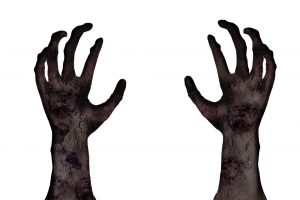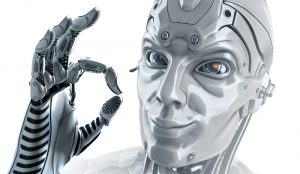
Riots are difficult and complex situations. They ‘re fascinating to everyone who sees policing as a profession. Controlling them is based on a deep understanding of human psychology. The theory that people in the crowds are behaving differently from individuals (sometimes known as mob mentality) has been extensively explored by psychologists. It is commonly acknowledged that crowds are acting more violently, more passionately, and perhaps with a corrupted moral compass compared to individuals. A crowd is not only a sum of its parts – it takes a life of its own.
Apparently, riots can happen anywhere–and at any time. From London to Hong Kong, even peaceful cities can suddenly erupt into widespread and often sustained unrest. But what is the role of psychology in this? And can this explain how, why, and when the crowds react with violence?
The recent movie Joker tells the dark story of how a mentally ill loner, Arthur Fleck, becomes the notorious comic book villain–and inspires a riotous mainstream movement. In the movie, the stage seems to be well set for a riot. Gotham City is described as “a powder keg of anarchy, inequality, corruption, cuts and all-round despair.”
But is the crowd rioting–or acting like a mindless mob? As the commentator, Aditya Vats suggested, the film appears to reflect the values of the 17th-century philosopher Thomas Hobbes, who believed that society is driven by chaos and destruction. In the movie, Fleck is represented as the individual who unleashes these seemingly innate tendencies when he violently kills three rich young bankers–and then admits his guilt as a guest on a live talk show on the air. Consequently, thousands of people wearing clown masks are shown rioting, looting, and killing, apparently inspired by his actions.
This is a straightforward, popular representation of crowd violence in the real world. But does it accurately represent the true psychology that underlies “riotous” behavior patterns? There are three “classical” theoretical explanations of the crowd that are going on in the public imagination.
The first, “mad mob theory,” states that individuals lose their sense of identity, reason, and rationality in the crowd, and so do things that they might otherwise not do as an individual. The second is that collective violence is the result of the convergence of “bad”–or criminal–individuals acting together in the same space as their violent personal inclinations.
The third is a variation of the first two and is captured in Joker ‘s story: “The bad leading the mad.” To quote from a book on the 2011 English riots Mad Mobs and Englishmen: that “evil and unscrupulous people – often outsiders or enemies – take advantage of the gullibility of the crowd in order to use them as a tool for destruction”.

What really happens
Although such theories are frequently well-rehearsed in the media, they do not, however, speak for what actually occurs during the “riot.” This lack of explanatory capacity has indicated that modern social psychology has long dismissed these traditional theories as incomplete and even potentially harmful–not least because they fail to take into account the factors that are actually driving this conflict.
In reality, when people protest, their collective action is never senseless. We need to consider this in order to resolve the causes of such violence. In fact, contrary to assumptions, there are substantial boundaries and limitations during riots relating to 1) what goes on (and what doesn’t) and 2) what (and who) becomes influential.
Research and modern crowd theory suggest that these behavioral restrictions of crowd action correspond, in important ways, to the limits of social identification. Remember Steve Reicher ‘s review of St. Paul’s “Riot” in 1980, in Bristol, England. Reicher showed that the actions of the crowd were regulated by the common sense of social identity of individuals as members of the culture of St. Paul. This identity was partly defined by a united opposition to the police “aggressors” who, symbolically, were seen as harassing the community by raiding the Black and White Cafe, an important local hub.
Reicher also demonstrated how this common ideology placed major restrictions on what had occurred during the “riot”–and where. First, there were strict restrictions on who and what was a legitimate target, with only those viewed as opposed to St. Paul ‘s identity – largely the police–being attacked. Second, there were established territorial boundaries–the police were only targeted when they were within the St. Paul boundaries and left alone after they had left.

Behavioral ‘contagion’
St. Paul ‘s research reveals that people in riots act according to their assumed social identities and do not act unconsciously, as if they were subject to an irrational “group mind.” For instance, crowd members characterized throwing stones at police officers as normal and common–”a few bricks went in and then people closed the road and everybody started doing it.”
But why do individual acts of violence propagate and “infect” others, causing them to riot? Classical crowd theories, such as the Joker theory, suggest that simple exposure to the actions of others causes people to behave in the same way. According to this line of thinking, the behavior is distributed through a cycle of “contagion” which is spread automatically from one person to another.
Yet this notion of behavioral contagion can not clarify the simple trends and limits of what activity “spreads” and what does not. Why, for instance, did the riots that swept England in August 2011–and which followed the shooting of Mark Duggan by the police –spread from London to some cities, but not to others?
The response to this is related to how people create group boundaries (we are more affected by in-group fellows than by out-group members) and the degree to which acts are compatible with the prevailing group norms. When protests spread through England in August 2011, analysis indicates that it was those who described themselves as anti-police who organized on the streets and were ultimately motivated by their localized encounters with the authorities and with each other.
The objectives of their subsequent collective riots were not spontaneous but focused primarily on the police, the symbols of privilege, and the large retail outlets owned by the big corporations.
In the real world of Gotham, only those who described themselves as “anti-wealth” would have been subject to the control of the crowd during the riots, and only those acts consistent with that ideology (for example, attacking and looting symbols of wealth) would have been “acceptable” to Joker’s foot soldiers.
Of course, Joker is not real life, but his story of contagion and senseless violence is popular as an “explanation” of real life. But behind the scenes, with a closer rereading of the riots, social psychology can help to break the myth of the irrational mob and begin to explain how the fictional city–as well as countless real ones–can and does transform from tranquility into widespread and enduring crowd violence.













































6 thoughts on “The Psychology Behind Riots–And Why It’s Never Mindless Violence”
How were the “rodney king” riots described, or was the pathology even considered?
This is where news media and social media can and perhaps does play a big part. The discussion of the 2011 riots suggested that the spread of the contagion is greater or lesser in certain areas because of similarities in the underlying struggles of separated peoples. As people become more and more entwined with one another, the struggles of one can become the struggles of another because of the artificial identity they have in created by social media. It creates a situation, where you can become a member of another race (for example) by electronic interaction. Your actual reality becomes overshadowed by the alternate reality you have created in physical isolation. The check against this alternate reality is missing. You become, all in, for a situation that has absolutely nothing to do with you. I would suggest that the Joker contagion theory is facilitated by our electronic connection even if the physical connection doesn’t exist.
The article tries in good faith to understand an extremely complex matter, protests that degenerate into riots with destruction, burning, looting, and violent activity into which many of the protests have evolved. The article seems to ignore one salient issue: that of acceleration. The current riots and mob violence started with peaceful protests. As restraints became less and less overt and more enabling, the violence accelerated and continue to do so largely because they have been unrestrained. Discontent with police brutality has accelerated to hatred of our country and its history; hence the destruction and defacing of statues, buildings, and historical figures seemingly unrelated to any legitimate cause or issue, past presidents, war heroes, churches, etc. Why? Your psychological analysis does not answer that elephant in the room. Anything, not only that which is revered by this nation seems fair game, but also anything else no matter how benign or how wholesome or sacred. In short, you give the current rioters too much credit. While it is tempting to apply psychology or sociology to explain the motive behind it, the actions of the rioters have become inexplicable and mindless. They must be reigned in if law and order is to prevail.
I agree wholeheartedly.
So how does this research help in explaining why people trash their own neighborhoods?
This happens so often, from the riots in the sixties to present day. And do we have any solutions to avoiding such action, or is it just to be accepted as MINDFUL violence.
Excellent question. It looks like even the scientific community is downplaying what’s going on.